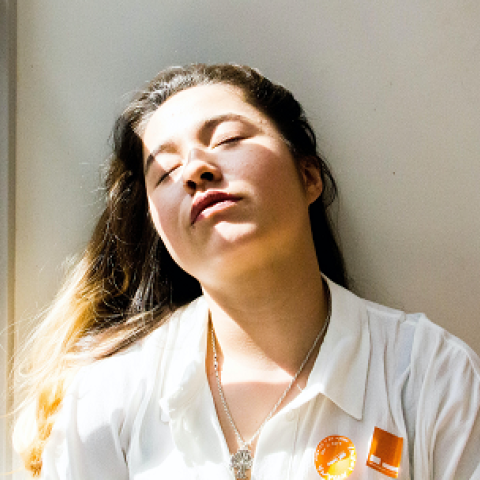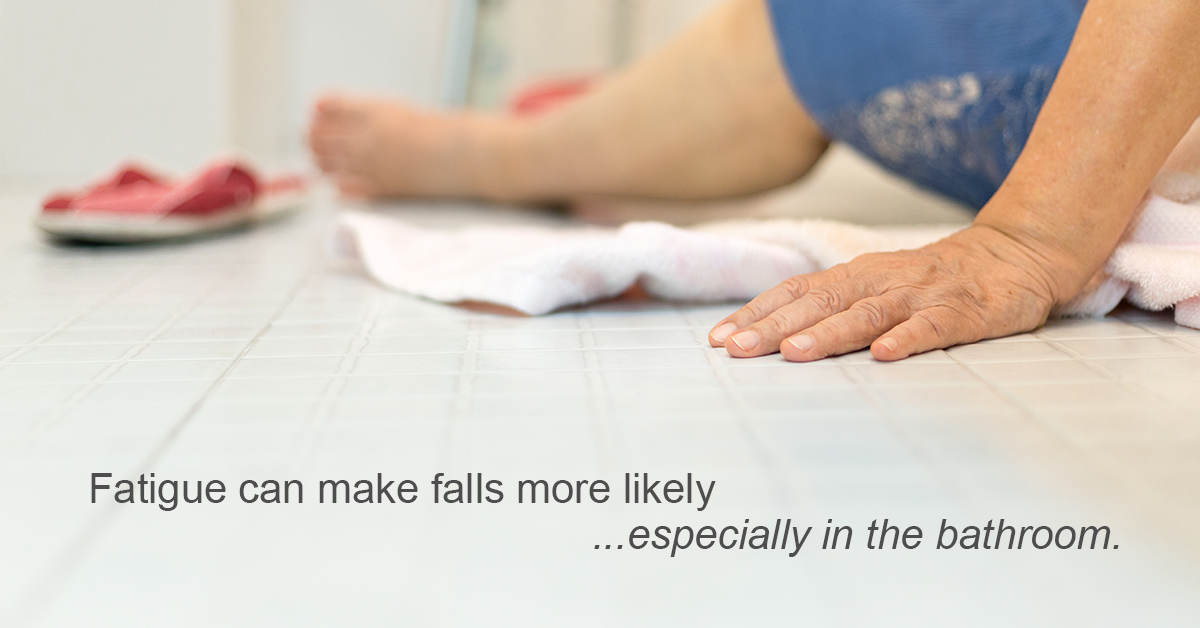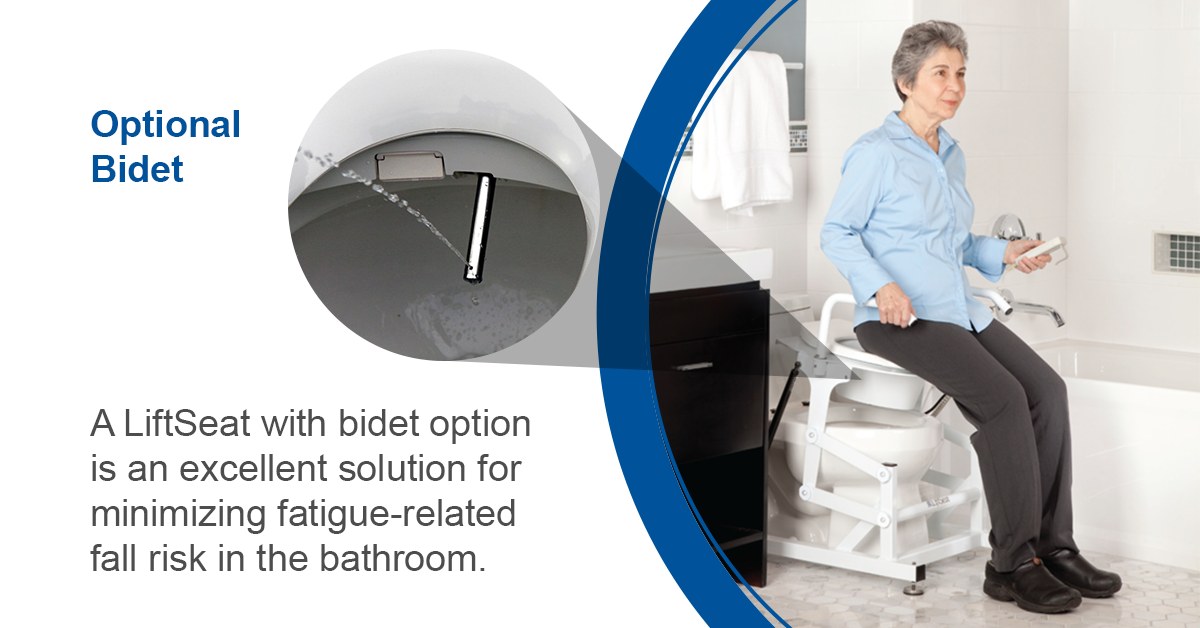Managing Fatigue to Prevent In-Home Falls
08/04/2022
Fatigue is a common struggle for aging adults and people living with chronic disease. In a 2013 study by Oxford Academic looking at people with chronic conditions, 80% of the patients that were surveyed stated that fatigue is one of the most important symptoms of their disease.1 Fatigue can also increase the risk of falls2, so learning how to manage fatigue using appropriate tools and techniques is important.

Assessing Risk
Home assessments are a key part of fatigue management for people with chronic conditions. Identifying and correcting the areas of the home that pose the most risk help improve high-effort tasks to ease movements associated with daily routines.
The bathroom can be a particularly challenging room to navigate, and several studies have shown that bathroom-related injuries are common—especially in older individuals. Bathing and using the toilet are two of the activities most likely to result in injury, with “more than a third of the injuries happen[ing] while bathing or showering” and “more than 14 percent occur[ing] while using the toilet.”3
Minimizing Risk
Due the high risk of injury, the bathroom is an important area to focus on. While remodeling may be necessary in some individual instances, most bathrooms can be made more accessible with a few simple modifications.
To accommodate fatigue and minimize risk of falling when bathing, consider making a few modifications both inside and outside the shower/bath. Non-slip stickers and bathmats are an inexpensive and easy solution to making the tub less slippery, while an in-shower seat can give tired bathers a place to rest. Grab bars are also an easy addition – they can be added both inside and just outside the bathing area to provide additional support while bathing and entering/exiting the shower or bath.
When it comes to using the toilet, it’s important to think about at individual’s particular needs. For instance, grab bars may be a helpful tool for someone who only needs slight assistance getting on and off the toilet, but for someone who has diminished upper body strength (or will continue to lose strength over time), grab bars are not a good long-term solution.
A better, more versatile option for elderly persons and those with chronic, debilitative disease is a powered toilet lift. Using a hydraulic mechanism, this type of toilet lift gently lowers and raises the user on and off their existing toilet. The LiftSeat is a popular choice because it is extremely sturdy, very easy to install and offers the added benefit of a bidet for those who have difficulty cleaning.

Bottom Line
For people at risk of fall due to fatigue, the bathroom is one of the most dangerous places in the home. Focusing on facilitating the tasks of bathing and using the toilet may help reduce the risk of fall and allow people to more independently perform daily essential tasks.
References:
1. Connolly, Deirdre. “Managing Fatigue in Patients with Chronic Conditions in Primary Care.” OUP Academic, Oxford University Press, 15 Mar. 2013, academic.oup.com/fampra/article/30/2/123/500104
2. Renner, Sharon W, et al. “Higher Fatigue Prospectively Increases the Risk of Falls in Older Men.” OUP Academic, Oxford University Press, 27 Nov. 2020, academic.oup.com/innovateage/article/5/1/igaa061/6007515
3. Bakalar, Nicholas. “Watch Your Step While Washing Up.” The New York Times, The New York Times, 15 Aug. 2011, www.nytimes.com/2011/08/16/health/research/16stats.html
This content is not intended to be a substitute for professional medical advice, diagnosis, or treatment. Always seek the advice of your physician or other qualified health provider with any questions you may have regarding a medical condition.